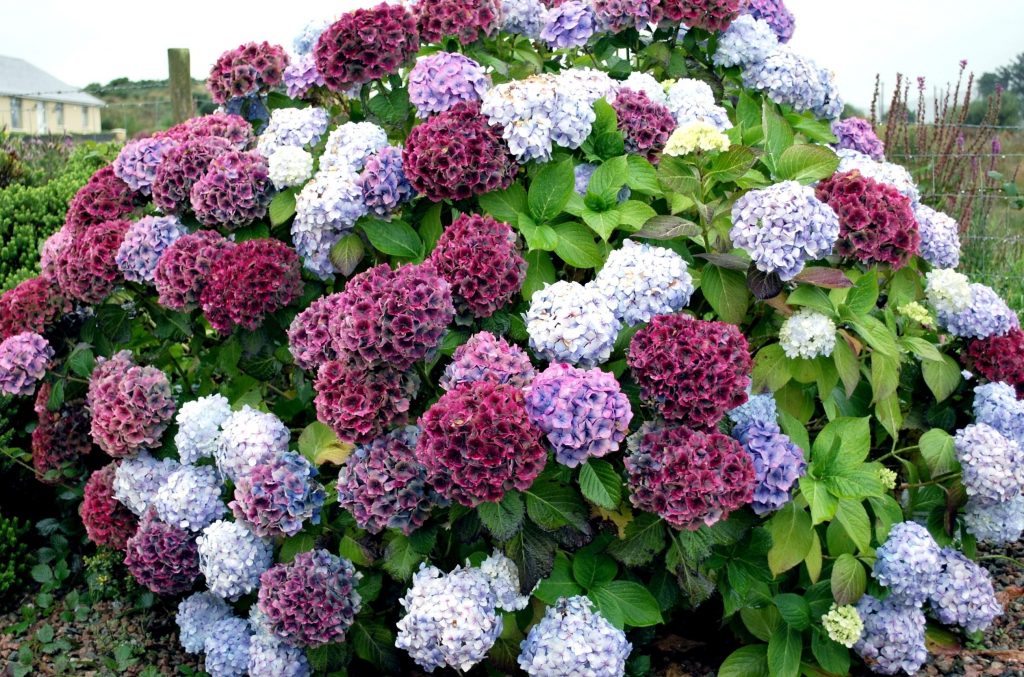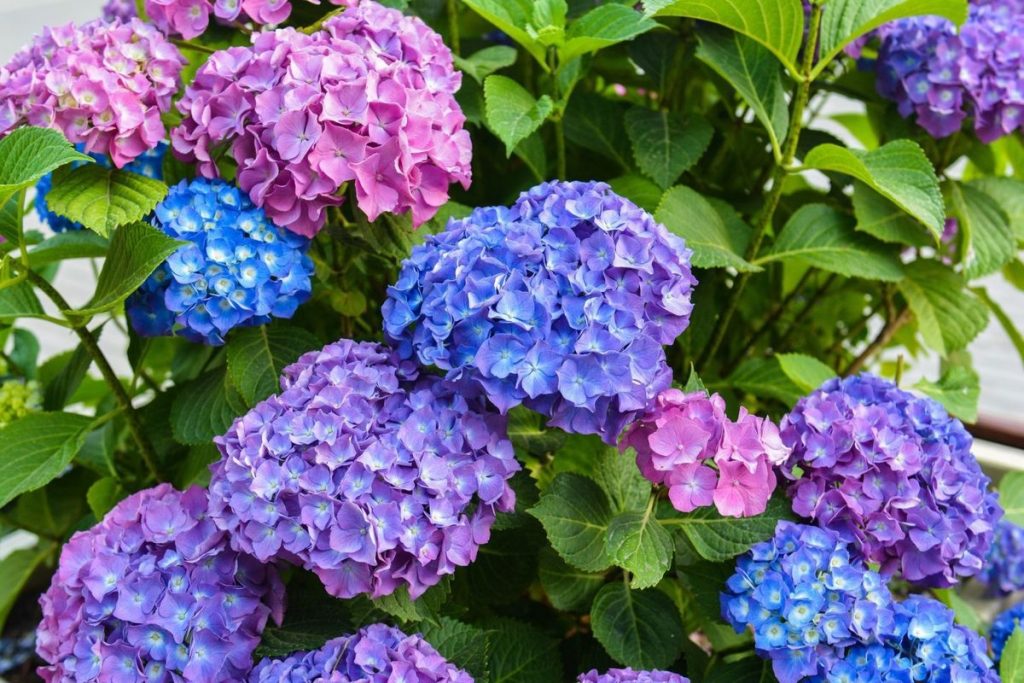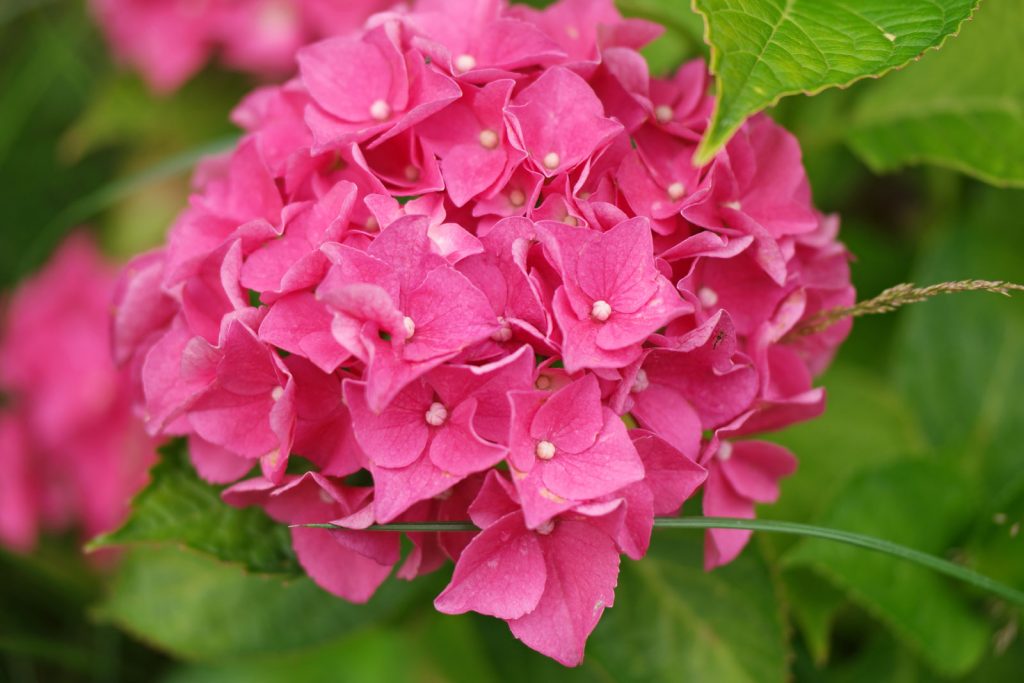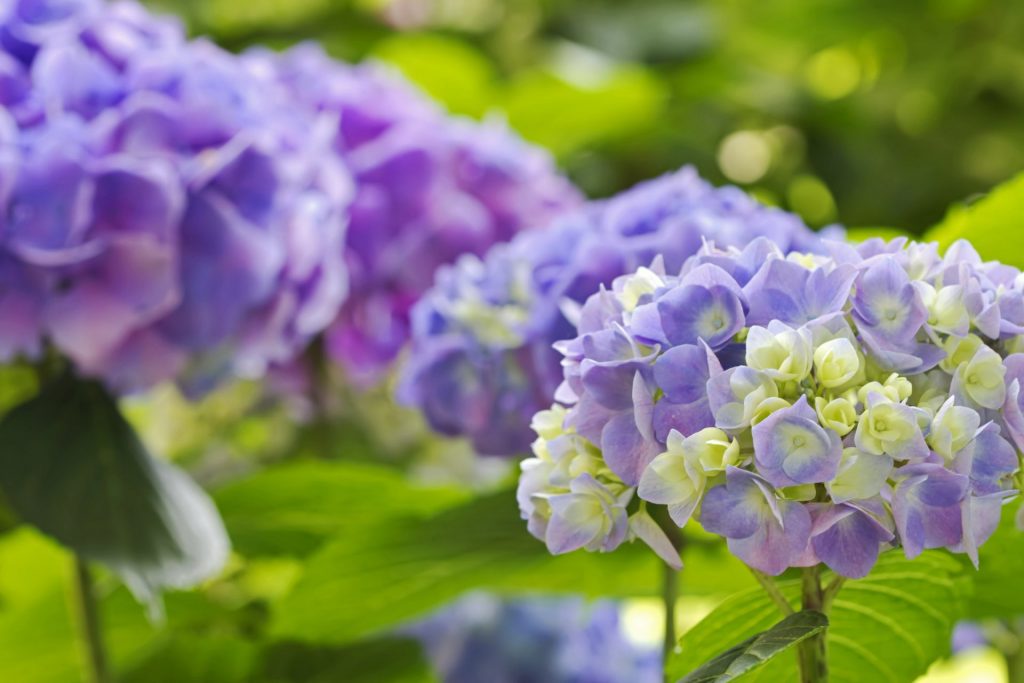What soil is needed for hydrangea
In the cultivation of garden flowers, the soil is of no small importance. The development of the plant and its flowering depend on its structure. The soil for hydrangeas must also meet certain requirements, otherwise it is quite difficult to grow it in full accordance with the varietal description.

Land for hydrangea
Ground requirements
Prepare the place 2-3 months before planting the hydrangea. The soil must have the following characteristics:
- fertility (nutritional value);
- lightness (non-plasticity);
- water absorption (water permeability);
- air permeability (aeration);
- acidity.
With a lack or excess of the recommended norms, the flower culture does not develop well, often refuses to bloom and even dies.
Nutritional value
The soil must be fertile. To increase the nutritional value, it is worth giving preference to complexes that contain ammonium sulfate, potassium sulfate, ferrous sulfate and sulfuric acid. They increase the beneficial properties of the soil and regulate acidity.
Mulching has a good effect, delaying nutrition in the soil layers. Compost, pine needles and peat chips are suitable as mulch, which during the discussion will become an organic feed.
You should not plant flowers in a place where sunflowers, corn, potatoes previously grew, which actively absorb nutrients and reduce soil fertility.
Ease
Planting a garden crop is required in loose and light soil. The root system of hydrangea does not tolerate dense loams and oily black soil.

How to acidify the soil for hydrangea
If the soil is heavy, it is diluted with coarse river sand or other drainage material (fine expanded clay, pebbles).
Soil lightness is determined by the presence of sand particles and by plasticity - the ability to maintain its original shape after exposure, without being compacted with a single lump.
Water absorption
Hydrangea belongs to moisture-loving plants, therefore an even distribution of water during irrigation is an important condition. This opportunity is provided by soil with good water permeability, without moisture stagnation.
Water retention in the soil can be reduced by providing good drainage prior to planting.
Air permeability
The addition of coarse-grained sand to the open ground contributes to an increase in aeration. Leafy soil can also be used as a natural baking powder. This simultaneously helps to speed up the evaporation of excess moisture in order to prevent waterlogging.
The air-permeability of the soil is increased by regular loosening.
Acidity indicators
The optimum acidity level is 5.0-5.5 pH.
With a decrease in indicators, hydrangea loses its decorative effect: its inflorescences lose their bright contrasting color.For these purposes, the deoxidation of the site where it is planned to plant a garden flower is carried out. Soil liming is not suitable for transplanting crops.
The acid level is measured using litmus testers.
Soil composition
In different varieties of hydrangea, a direct relationship is observed between the soil composition and the shade of the inflorescences.

How to make the soil acidic for hydrangeas
- Panicled - prefers loams with a fairly high acidity. Lush flowering is ensured when planted in soil from turf, peat and coniferous compost.
- Arboreal - especially susceptible to soil composition and requires mandatory drainage. Loves and grows better on loose loamy soils. The species tolerates the presence of limestone in the soil layers.
- Large-leaved - loves places near heather crops. I plant it more often near thuja, juniper and rhododendron. The most suitable soil composition - a mixture of sod and leafy soil, humus, peat and river sand, the variety needs to maintain a constant acidity indicator, the drops of which immediately affect the color of the buds.
Fertilization rules
Regular application of fertilizing while caring for a plant in the garden provides the fertility of the earth necessary for a flower culture.
Required frequency:
- before entering the active growing season;
- before budding;
- when flowering in summer, twice a month;
- before the resting stage, in preparation for winter.
How to prepare the soil yourself
You can prepare the soil of the desired composition for planting hydrangeas yourself. Main components:

Soil acidity for hydrangea
- coarse sand - 1 part;
- sheet land - 4 parts;
- turf - 2 parts;
- peat crumb - 2 parts;
- pine needles.
Coniferous needles and peat are suitable for mulch.
When preparing a substrate for room hydrangea, humus is excluded.
The consequences of improper care
Due to improper preparation and care of the land plot, the hydrangea growing on it loses its decorative effect.
Signs of non-compliance of the soil with the requirements:
- Yellowing of the leaves. Indicates an excess of moisture due to lack of drainage in the lower soil layers. As a result, fermentation processes are activated, which invariably lead to decay of the root system. Yellow foliage can also be a symptom of nutritional deficiencies and low acidity.
- Falling crown. With insufficient aeration of the land, combined with improper watering and low fertility, leaves begin to curl, wither and fall off.
- Chlorosis. Yellow fragments on leaf plates are a consequence of a sharp change in the level of acidity and its approach to an alkaline reaction. As an urgent measure, watering with iron solutions is used.
- Rust. It appears due to improperly organized feeding with an excess of the permissible nitrogen dose. Watering with copper chloride (20 g per 5 liters of water) helps to restore the composition of the soil.
Pests and diseases in the ground
Non-disinfected soil becomes a place for pests to settle, which move to the hydrangea and violate its integrity. Among the most common harmful insects on the plant are garden slugs, which eat up the vegetative mass and lead to a loss of decorativeness.

Land for garden hydrangea
Cope with snails will be able to treat the bush and the surface layer of the soil with Molluscicide.
In the ground, the causative agents of fungal diseases are able to maintain an active vital activity. Prevent the development of fungus by prophylactic spraying with fungicides.
How to oxidize a site
For acidification of a land plot, they often use ready-made organic solutions used in horticulture in order to regulate acidity indicators.
Homemade acidifiers are prepared at home based on citric, malic, oxalic, acetic acids (1 tbsp.per 10 l of water) or with electrolyte (1 ml per 1 l of water). Watering rate - 10 l / m².
Oxidation stages:
- Analyze the alkaline composition. The method is selected depending on the results obtained.
- Light, loose soils are brought to the desired acidic state by introducing organic matter, such as compost. The main rule is the organization of drainage (perlite, expanded clay, pebbles), which helps to increase the air permeability necessary for the decomposition of natural components. Sphagnum moss is often used as a drainage material.
- Clayy, heavy ones are deoxidized with acidifiers, adding ferrous sulfate, which provokes the onset of chemical reactions.
The dependence of the color of hydrangea on the level of acidity
Changes in soil acidity have a direct impact on the color of the buds. The large-leaved variety especially depends on this parameter.

Soil for hydrangeas
To obtain an experimental result, flower growers carry out acidification, observing the change in decorativeness. However, you should not exceed the indicator of 7.5 points, because this will have a detrimental effect on the condition of the root system. When the pH level drops below 4.0, hydrangea in most cases stops developing and stops blooming.
In order to properly acidify the garden plot and get a color variety, experienced florists suggest that beginners use the table of dependence of the color of a large-leaved variety on pH:
| Acid level, pH | Possible shade of flower petals |
| 4,0 | Purple |
| 4,5 | Blue |
| 5,0 | Blue |
| 6,0 | Pinkish |
| 6,5 | Dark pink |
| 7,0 | Contrast pink |
| 7,5 | Light pink |

